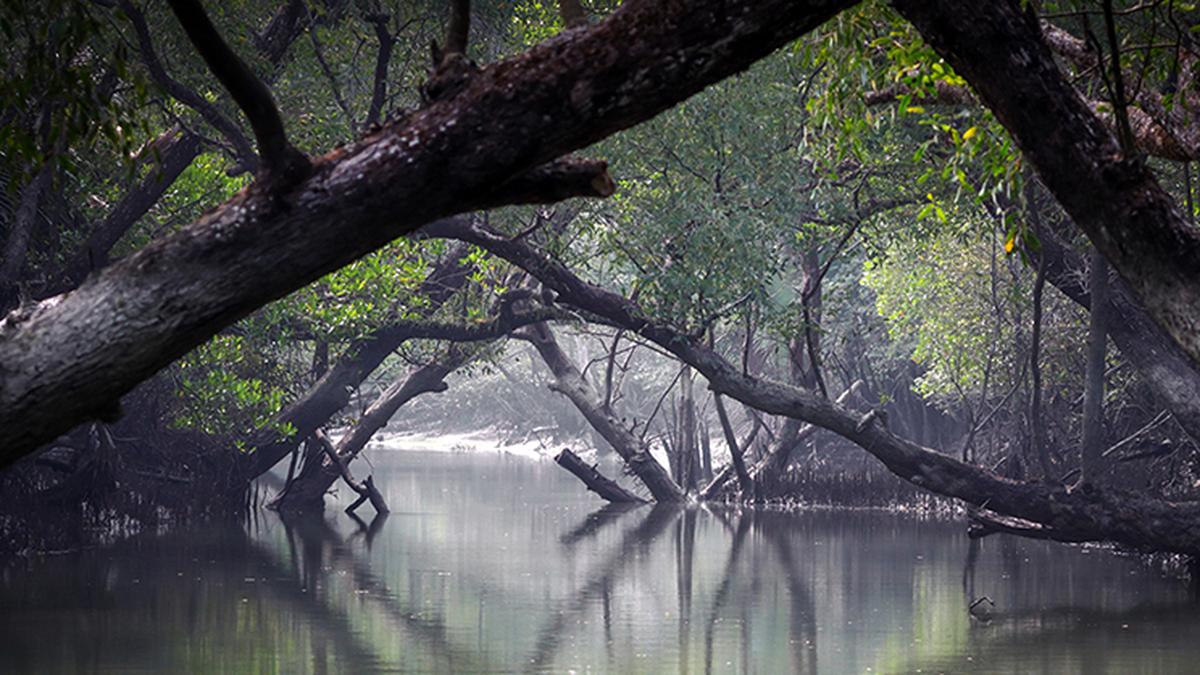Global warming is raising sea levels and making flooding more common in some areas. Researchers have held both these effects among others responsible for discouraging the growth of plants of many tree species in coastal areas. But a new study by researchers at Drexel University in Philadelphia and the Northern University of Arizona has called for a pause in this thinking.
The study paper, published in the journal Frontiers in Forests and Global Change on August 28, has reported that a rising sea and coastal flooding could actually enhance the resilience of some coastal tree species while being detrimental to others.
Trees respond quickly
How well trees grow in a place depends on the place’s ambient temperature, average rainfall, soil health, access to water with the appropriate qualities, and the location of other vegetation nearby, among other factors. Trees can respond fairly quickly to these changes, too. For example, even as sea levels are rising by a few millimetres a year, many species of coastal trees have started to move further inland, where the tides are lower and the salinity more tolerable — but also where other conditions may be more inhospitable.
The study’s authors LeeAnn Haaf and Salli F. Dymond previously studied coastal forests in the Delaware Bay in the U.S. state of Delaware and the Barnegat Bay in New Jersey. In a paper published in 2021, they reported that different plant species here responded differently when exposed to rising seas and repeated coastal flooding.
“In our recent study, we found species- and site-specific patterns related to sea level rise, temperature, and precipitation pattern (associated to tree growth) and that also extends to how those factors change with climate change,” Haaf, an environmental scientist at Drexel University, said.
One species in particular, the American holly (Ilex opaca), responded to more water in its surroundings by increasing the rate at which it grew — while loblolly pine (Pinus taeda) and pitch pine (Pinus rigida) trees suffered under higher water levels.
Tracking the rings
In the new study, Haaf and Dymond used a method called dendrochronology to understand how trees grew in response to specific conditions. In dendrochronology, scientists estimate when a tree formed a particular tree ring, and based on that develop a time-wise correlation between a climatic condition and the tree’s response.
They wrote in their paper that they compared changes in “environmental conditions” to the growth of American holly, loblolly pine, and pitch pine trees in the Delaware and Barnegat Bays. They also used “gradient boosted linear regression, a machine-learning approach, … to investigate tree growth responses across gradients in temperature, precipitation, and tidal water levels.”
In this way, Haaf and Dymond assessed whether tree rings became larger or smaller as each natural condition varied over time.
Gradient-boosted linear regression
The tree rings consist of water vessels. When a tree is exposed to a lot of rain along with appropriate levels of sunlight and ambient temperature, it also develops more water vessels. But a heavy downpour and a deluge would disrupt this process altogether and prevent the plant from growing normally. So thicker rings signify abundant tree growth while thinner ones mean stunted growth. And because older rings remain at the centre of the tree trunk and newer ones near the periphery, dendrochronology can help provide timestamps for climatic conditions in the past.
Gradient-boosted linear regression is a machine-learning model used to understand patterns in tree rings. It helps by estimating the effects of a combination of forces acting on a system. Such problems are too complicated for techniques like a correlation test that indicate how closely the changes in the values of only two variables are related and overlook interactions between variables that cause other effects. Pratik Karmakar, a computer science researcher at the National University of Singapore who wasn’t involved in the study, said “the gradient boosted linear regression model of machine learning is an appropriate method used in this study”.
While the data are specific to the mid-Atlantic region, the “methods would certainly work in any temperature location in the world,” Haaf said.
She added that the correlation with temperature, precipitation, and sea level may not be significant everywhere — “but I think that is part of understanding how at-risk forests are.”
Sea-level rise accelerating
Sea levels were increasing by around 2 mm/year in 1993. This rate has since doubled and climate researchers expect floods in coastal areas will increase threefold by 2050 and the average number of days of flooding will increase twofold.
Haaf continued, “Our study can help forest managers understand how at-risk a coastal forest is to tidal flooding by inventorying what species are there and considering other conditions specific to that site.” For example, some temperate coastal forests are predominantly loblolly. “Such forests may do better than others as temperature rises, so these forests may not need to be prioritised yet.”
More than three billion people worldwide live near the coast and depend on coastal ecosystems’ services to meet many of their needs, including livelihoods. Conserving coastal vegetation is thus valuable.
‘Site-specific mechanisms’
The new study highlights the coastal plant conservation strategies that currently emphasise sea level rise and coastal inundation and need amendments to take other weather and soil factors into account.
“As climates change, and sea levels rise, some sites or species may confer benefits to growth, whereas other sites may experience conditions that reduce growth,” the researchers wrote in their paper.
“Site-specificity of results underscores the importance of local conditions on tree growth in coastal forests. To aid future management efforts, future research should examine site-specific mechanisms and explore non-linear relationships that may contribute to tree responses to climate and tidal flooding.”
Madhurima Pattanayak is a freelance science writer and journalist based in Kolkata.
Published – October 16, 2024 05:30 am IST











